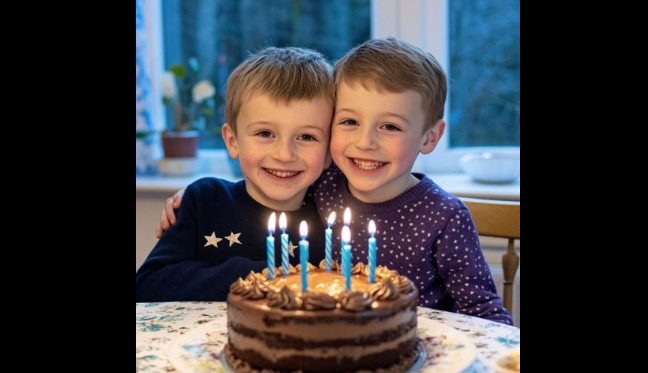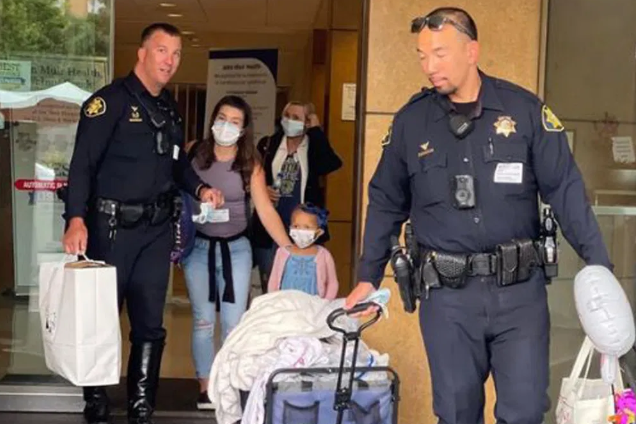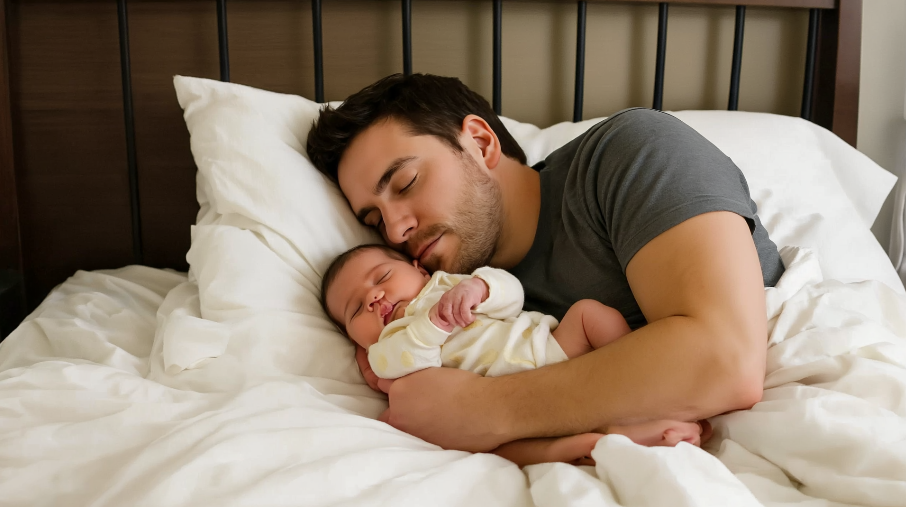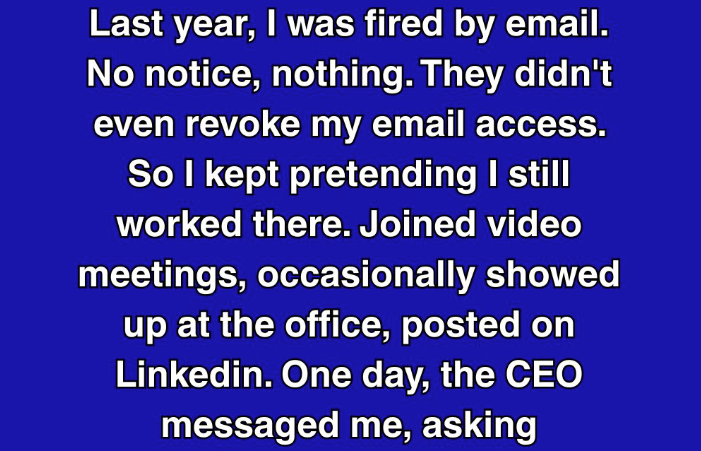From the moment they entered the world, they were a pair, inseparable. Two hearts beating in rhythm. One unbreakable connection.
This snapshot? It captures what seems like a typical birthday celebration. Identical sweaters. A chocolate cake centerpiece. Flickering candles. Unfiltered happiness.
Yet, beneath the surface of this joyful image lies a truth we kept hidden.
Only seven days before this picture was taken, a phone call changed everything.
One twin—our radiant adventurer, our curious young scientist—received a diagnosis that blindsided us all.
The doctors advised us to proceed with the party. “Maintain normalcy,” they urged.
And so, we did.
Together, they extinguished the candles with a shared breath. They made wishes. They laughed with every chocolate-smeared bite.
But as the echoes of laughter quieted and the plates were stacked away, a weight settled over us, impossible to dismiss. The twins scampered upstairs to their games, as they always did, while we adults lingered at the table, enveloped in silence. No one dared voice the fear we all shared: that this might be their final shared birthday.
The diagnosis was daunting: acute leukemia. It struck without warning. One moment, he was racing through the backyard, scaling trees, building forts alongside his brother. The next, we were in a sterile hospital room, absorbing talk of treatment plans, survival odds, and an uncertain future.
Yet, that night, watching him giggle with frosting smeared across his cheeks, you’d never suspect anything was wrong. His vitality shone through, almost as if he sensed he needed to glow brighter for his brother’s sake.
The greatest challenge wasn’t the medical appointments or the hospital stays. It was witnessing his twin grapple with understanding. At ten years old, how do you convey to a child that his other half faces an illness no bandage or nap can mend?
We tried our best. We explained his brother would need medicine, would tire more easily, might not always be up for outdoor play or late-night adventures. He nodded solemnly, but later, I caught him whispering to his brother: “Don’t worry. I’ll run fast enough for both of us.”
Those words broke my heart.
The weeks following the birthday blurred into a haze of hospital trips and sleepless nights. The healthy twin refused to stay behind, attending every appointment despite missing school. He’d sit in the waiting room, homework in hand, resolute in his commitment to stand by his brother.
Then came an unexpected turn.
Further tests revealed the healthy twin was an almost perfect donor match. His bone marrow could be the key to his brother’s survival.
Initially, we wavered. The thought of subjecting one child to a painful procedure to save the other felt overwhelming. But both boys were resolute. The sick twin murmured, “I don’t want him to hurt for me.” His brother countered, “You’d do the same for me.”
The doctors outlined the risks, the discomfort, the recovery process. We tried to soften the details, but the boys listened intently. In the end, the healthy twin met the doctor’s gaze and asked, “When can we begin?”
On the day of the transplant, I held my breath. Seeing them in side-by-side hospital beds—one preparing to give, the other to receive—was surreal. Their hands stretched across the divide, fingers intertwined, holding on until the nurses gently parted them.
The procedure succeeded, surpassing expectations. But recovery stretched long and grueling. The sick twin, weakened and vulnerable, required isolation for months. Our home became a cocoon, devoid of playdates, school, or ordinary routines.
Yet, the twins transformed it into something extraordinary. They crafted games that didn’t demand physical exertion. They constructed vast Lego universes, spun tales into the night, and even filmed “science shows” with a borrowed camera, playing the roles of renowned inventors.
In those months, I saw something remarkable: the illness didn’t fracture their spirit. Instead, it fortified their bond. The healthy twin never grumbled about what he missed or the sacrifice he made. He simply said, “This is what brothers do.”
But life hadn’t finished challenging us. Just as hope began to take root, the doctors summoned us again. The treatment wasn’t as effective as hoped. There was a risk the cancer could return.
The news crushed us. After all we’d endured—the transplant, the pain, the fragile hope—it felt like too much.
But the twins? They refused to surrender. Instead of despair, they chose joy. They crafted a bucket list—not of grand voyages, but of simple, childlike dreams. Sleeping in a living room fort for a week. Watching scary movies past midnight. Eating ice cream for breakfast. Camping under the stars in the backyard.
We fulfilled every wish on that list. Those months became some of the most joyful of our lives. The photos from that time don’t capture illness. They radiate laughter, two boys wringing every drop of life from their shared moments.
Then came the moment we dreaded. A persistent fever. A hospital stay that dragged into weeks. The sick twin weakened, his smile dimming for the first time. His brother never left, even sleeping in a chair by his bedside.
One night, I overheard their whispers. The sick twin said, “If I don’t make it, promise me something.”
“What?” his brother asked.
“Keep exploring. For both of us.”
A heavy silence followed, then the healthy twin’s voice, firm and fierce: “You’re going to make it. We’ll explore together.”
I slipped out of the room, tears streaming down my face.
Then, against all expectations, a new treatment emerged—experimental, uncertain, but promising. The doctors believed he was a strong candidate. We agreed without hesitation.
And miraculously, it worked. Gradually, painstakingly, his strength returned. The cancer didn’t disappear instantly, but the signs were unmistakable: he was fighting, and this time, he was winning.
Months later, when he rang the hospital bell to mark the end of treatment, his twin stood beside him, their hands clasped. The staff erupted in cheers, and in that moment, the world felt whole again.
Reflecting now, I see that birthday photo wasn’t merely a moment of joy. It was a testament to resilience, to a love so fierce it defied fear.
Now teenagers, the boys are thriving, still inseparable. They laugh about being “one and a half people” because of the transplant. Every birthday, they make the same wish: “For more adventures.”
The takeaway? Life can unleash storms we never anticipate. But love—the deep, steadfast love of family—can anchor us. It doesn’t erase the hardship, but it fuels the courage to endure.
If you’re navigating your own storm, hold fast. Embrace joy, even when it feels out of reach. Sometimes, what seems like an ending is merely a new beginning waiting to unfold.
And when you have the chance to love fiercely, seize it. That love might be the spark that changes everything.
If this story moved you, share it with someone who could use a dose of hope. A like goes a long way—it helps spread the message that even in the darkest moments, there’s light worth clinging to.




